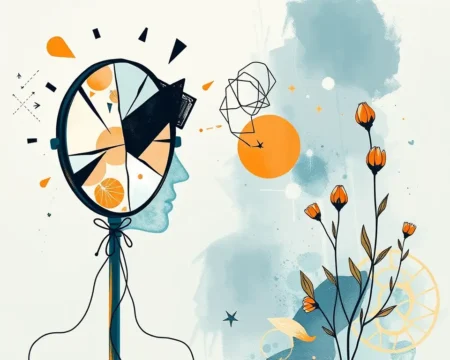The pursuit of happiness is an age-old quest, and in our modern world, it often feels like a complex equation with no easy answers. Amidst the noise of self-help gurus and fleeting trends, the idea of a gratitude journal has emerged as a simple, yet surprisingly effective tool. But can a relatively expensive notebook truly make a difference? One woman decided to put it to the test, and the results, as reported by her friends, are intriguing.
The Experiment Begins: Why a Gratitude Journal?
The concept of gratitude journaling isn’t new. At its core, it involves dedicating time each day to reflect on the things you are thankful for. It could be anything from a warm cup of coffee to a loving family member. The practice is rooted in the belief that focusing on the positive aspects of life can shift your mindset and improve overall well-being.
However, with a plethora of free apps and standard notebooks readily available, the question arises: is a premium gratitude journal really worth the investment? The subject of this experiment opted for a $35 journal with guided prompts, hoping the structured approach would enhance the practice and, ultimately, her happiness.
Unpacking the Premium Journal: More Than Just a Notebook?
The $35 price tag for a journal might seem steep to some. But these premium journals often come with features designed to enhance the practice. The journal in question included carefully curated prompts, space for reflections, and motivational quotes. The idea is that the guided approach helps users dig deeper and more consistently engage with the process of gratitude. It wasn’t just a blank space to fill, but a guided journey towards positivity.
These types of journals often come with extra attention to material quality, such as thick paper that prevents ink bleeding and a durable cover. These features might seem trivial, but they can enhance the user experience and encourage consistent use. The feel of the journal, the satisfying turning of the pages, can contribute to a sense of intentionality, making the practice of gratitude feel more important.
The Daily Routine: How to Actually Use a Gratitude Journal
The process of keeping a gratitude journal, despite its apparent simplicity, requires commitment. The woman participating in this experiment incorporated the journaling into her nightly routine. Before going to bed, she would dedicate 10-15 minutes to reflecting on her day and jotting down things she was grateful for. It wasn’t about writing lengthy entries; it was more about mindful reflection.
She focused on specific experiences rather than general statements, such as “I’m grateful for the sunshine today” instead of “I’m grateful for good weather”. This helped her appreciate everyday moments more deeply. The prompts in the journal, which changed daily, also encouraged her to view things from different perspectives. The structured approach, it turned out, was key to the consistency.
The Shift: What Her Friends Noticed
Here’s where the experiment gets really interesting: The woman’s friends began to comment on a noticeable shift in her overall demeanor. They described her as appearing more positive, more optimistic, and even more relaxed. It wasn’t a sudden transformation, but rather a gradual shift in her outlook that they picked up on over the course of several weeks.
It is essential to note that this was not just the woman’s subjective experience; these observations came from external sources. Her friends, being people who interact with her regularly, offered a more objective perspective on any changes they perceived. Their feedback, therefore, added significant weight to the notion that the gratitude journal was indeed having an impact.
The Science Behind Gratitude: Why It Works
While some might dismiss gratitude journaling as pseudoscience, there’s a growing body of research that suggests otherwise. Studies have shown that regular practice of gratitude can have several positive effects, such as:
- Improved mental health: Gratitude has been linked to reduced symptoms of depression and anxiety. By focusing on positive aspects of life, you can shift your focus away from negative thoughts.
- Increased happiness: Experiencing and expressing gratitude can increase feelings of joy and contentment. When you are actively looking for things to be grateful for, you are more likely to find them.
- Better sleep: Reflecting on positive events before bed can lead to a more relaxed state, improving the quality of your sleep. When you fall asleep thinking about the good things, you are less likely to be kept awake by anxious thoughts.
- Strengthened relationships: Expressing gratitude towards others can improve interpersonal connections and create stronger bonds.
- Enhanced resilience: When you face challenges, focusing on what you are grateful for can give you a sense of perspective and help you navigate difficult times.
These findings suggest that the benefits observed by the woman’s friends weren’t just coincidental, but could be rooted in psychological mechanisms. By consistently focusing on the positive, she was actively rewiring her brain towards a more optimistic state.
Debunking the Skepticism: Is a $35 Journal Necessary?
The $35 price tag is likely to be a point of contention for many people. Can you achieve similar results with a regular notebook? The answer, ultimately, is yes. The structure, the quality paper, and the guided prompts can help enhance the experience. But the core practice of gratitude journaling is what is important.
You don’t need a fancy notebook to practice gratitude effectively. However, the premium journal might serve as a motivating factor, making the practice feel more intentional and special. If the higher price makes you more likely to engage regularly, it might be a worthwhile investment. It is all about what works best for the individual and the context of their lifestyle.
Beyond the Journal: Cultivating a Gratitude Mindset
Gratitude journaling is not a magic bullet that will fix all problems. Rather, it is a tool that can help you cultivate a gratitude mindset. This mindset can be maintained even without the journal through simple practices like:
- Verbalizing gratitude: Expressing thankfulness to those around you. Thanking people can make a big difference in the way you perceive the world.
- Mindful moments: Pausing during the day to appreciate your surroundings. Take the time to notice the beautiful and positive things in your daily routine.
- Positive self-talk: Recognizing and appreciating your own achievements and strengths. It is important to not just look at the world around you, but also at the wonderful things about yourself.
These practices can help you appreciate the good things in life and create a more positive attitude towards yourself and your circumstances.
Conclusion: The Value of a Little Gratitude
The experiment of using a $35 gratitude journal has shown that the practice of gratitude can be a powerful tool for promoting well-being. While the expensive journal itself might not be necessary, it can serve as an incentive for some. The key lies in the consistent practice of reflecting on the positive aspects of life.
The changes noticed by the woman’s friends serve as a testament to the potential of gratitude to not only change your personal outlook, but also the way you are perceived by others. Whether you use a simple notebook or an expensive journal, it’s the act of gratitude that matters. In our often fast-paced and challenging world, the simple act of reflecting on what we are grateful for can be a powerful step towards a more fulfilling and joyful life. The power of a little bit of daily gratitude might just make all the difference.










